A Multifaceted Approach to Developing an Australian National Map of Protected Cropping Structures
Abstract
:1. Introduction
2. Methodology
2.1. Protected Cropping Systems Definitions
2.2. Compiling the Map
- Remotely sensed imagery, including open-source image services (e.g., Esri Basemaps and Google Earth), imagery subscriptions (e.g., Planet) and purchased acquisitions (e.g., aerial photography, Skysat and KOMPSAT3).
- Ancillary data including existing industry data and government land use information.
- Field validation.
- Industry engagement (citizen-science), including peer review—enabled via location-based tools developed by University of New England’s (UNE) Applied Agricultural Remote Sensing Centre (AARSC).
- Deep learning, using existing draft mapping to train a convolutional neural network (CNN) model and use predictions on other geographic area, dates and sensors to assist in the updating of the PCS map.

2.2.1. Remotely Sensed Imagery
2.2.2. Ancillary Data
2.2.3. Field Validation
2.2.4. Peer Review (Industry Engagement)
2.3. Deep Learning Using Earth Observation Data
- Altering the contrast and colourations,
- adding noise to the image,
- altering the geometry and scale of the image by rotating, zooming and stretching the image,
- and adding blur and artificial clouds/fog/smoke.
2.3.1. Spatial Resolution Trials
2.3.2. Mapping PCS Structure Type
- Protected Cropping: including all nets and greenhouses;
- Greenhouses: only consisting of polyhouses, polytunnels and glasshouses;
- Nets: consisting of all nets and shadehouses.
2.3.3. Computing Infrastructure and Software
2.3.4. Integrating into the National Map
3. Results
3.1. Deep Learning
3.2. Mapping Analysis
4. Discussion
5. Conclusions
Author Contributions
Funding
Institutional Review Board Statement
Informed Consent Statement
Data Availability Statement
Acknowledgments
Conflicts of Interest
References
- Chakraborty, S.; Newton, A.C. Climate Change, Plant Diseases and Food Security: An Overview: Climate Change and Food Security. Plant Pathol. 2011, 60, 2–14. [Google Scholar] [CrossRef]
- Van Dijk, M.; Morley, T.; Rau, M.L.; Saghai, Y. A Meta-Analysis of Projected Global Food Demand and Population at Risk of Hunger for the Period 2010–2050. Nat. Food 2021, 2, 494–501. [Google Scholar] [CrossRef] [PubMed]
- Transforming Food Systems for Food Security, Improved Nutrition and Affordabel Healthy Diets for All. The State of Food Security and Nutrition in the World; FAO: Rome, Italy, 2021; ISBN 978-92-5-134325-8. [Google Scholar]
- United Nations Transforming Our World, the 2030 Agenda for Sustainable Development. General Assembly Resolution A/RES/70/1 2015; United Nations, Department of Economic and Social Affairs: New York, NY, USA, 2005. [Google Scholar]
- Rahaman, A.; Kumari, A.; Zeng, X.-A.; Khalifa, I.; Farooq, M.A.; Singh, N.; Ali, S.; Alee, M.; Aadil, R.M. The Increasing Hunger Concern and Current Need in the Development of Sustainable Food Security in the Developing Countries. Trends Food Sci. Technol. 2021, 113, 423–429. [Google Scholar] [CrossRef] [PubMed]
- Foodbank. Foodbank Hunger Report 2021-The Reality of the Food Crisis Facing Australia; Foodbank Australia Limited: North Ryde, NSW, Australia, 2021. [Google Scholar]
- Jensen, M.H.; Malter, A.J. Protected Agriculture: A Global Review; World Bank Technical Paper; World Bank: Washington, DC, USA, 1995; ISBN 978-0-8213-2930-6. [Google Scholar]
- Kumar, K.S.; Tiwari, K.N.; Jha, M.K. Design and Technology for Greenhouse Cooling in Tropical and Subtropical Regions: A Review. Energy Build. 2009, 41, 1269–1275. [Google Scholar] [CrossRef]
- Vuković, M.; Jurić, S.; Maslov Bandić, L.; Levaj, B.; Fu, D.-Q.; Jemrić, T. Sustainable Food Production: Innovative Netting Concepts and Their Mode of Action on Fruit Crops. Sustainability 2022, 14, 9264. [Google Scholar] [CrossRef]
- Thackway, R. (Ed.) Land Use in Australia; ANU Press: Acton, ACT, Australia, 2018; ISBN 978-1-921934-42-1. [Google Scholar]
- Lambin, E.F.; Tran, A.; Vanwambeke, S.O.; Linard, C.; Soti, V. Pathogenic Landscapes: Interactions between Land, People, Disease Vectors, and Their Animal Hosts. Int. J. Health Geogr. 2010, 9, 54. [Google Scholar] [CrossRef] [PubMed]
- Anyamba, A.; Small, J.L.; Britch, S.C.; Tucker, C.J.; Pak, E.W.; Reynolds, C.A.; Crutchfield, J.; Linthicum, K.J. Recent Weather Extremes and Impacts on Agricultural Production and Vector-Borne Disease Outbreak Patterns. PLoS ONE 2014, 9, e92538. [Google Scholar] [CrossRef] [PubMed]
- Stoddard, S.T.; Morrison, A.C.; Vazquez-Prokopec, G.M.; Paz Soldan, V.; Kochel, T.J.; Kitron, U.; Elder, J.P.; Scott, T.W. The Role of Human Movement in the Transmission of Vector-Borne Pathogens. PLoS Negl. Trop. Dis. 2009, 3, e481. [Google Scholar] [CrossRef] [PubMed]
- Chawla, I.; Karthikeyan, L.; Mishra, A.K. A Review of Remote Sensing Applications for Water Security: Quantity, Quality, and Extremes. J. Hydrol. 2020, 585, 124826. [Google Scholar] [CrossRef]
- Karthikeyan, L.; Chawla, I.; Mishra, A.K. A Review of Remote Sensing Applications in Agriculture for Food Security: Crop Growth and Yield, Irrigation, and Crop Losses. J. Hydrol. 2020, 586, 124905. [Google Scholar] [CrossRef]
- Jiménez-Lao, R.; Aguilar, F.J.; Nemmaoui, A.; Aguilar, M.A. Remote Sensing of Agricultural Greenhouses and Plastic-Mulched Farmland: An Analysis of Worldwide Research. Remote Sens. 2020, 12, 2649. [Google Scholar] [CrossRef]
- Koc-San, D. Evaluation of Different Classification Techniques for the Detection of Glass and Plastic Greenhouses from WorldView-2 Satellite Imagery. J. Appl. Remote Sens. 2013, 7, 073553. [Google Scholar] [CrossRef]
- Tarantino, E.; Figorito, B. Mapping Rural Areas with Widespread Plastic Covered Vineyards Using True Color Aerial Data. Remote Sens. 2012, 4, 1913–1928. [Google Scholar] [CrossRef]
- Arcidiacono, C.; Porto, S.M.C. A Model to Manage Crop-Shelter Spatial Development by Multi-Temporal Coverage Analysis and Spatial Indicators. Biosyst. Eng. 2010, 107, 107–122. [Google Scholar] [CrossRef]
- Vox, G.; Loisi, R.V.; Blanco, I.; Mugnozza, G.S.; Schettini, E. Mapping of Agriculture Plastic Waste. Agric. Agric. Sci. Procedia 2016, 8, 583–591. [Google Scholar] [CrossRef]
- Blanco, I.; Loisi, R.V.; Sica, C.; Schettini, E.; Vox, G. Agricultural Plastic Waste Mapping Using GIS. A Case Study in Italy. Resour. Conserv. Recycl. 2018, 137, 229–242. [Google Scholar] [CrossRef]
- Parlato, M.C.M.; Valenti, F.; Porto, S.M.C. Covering Plastic Films in Greenhouses System: A GIS-Based Model to Improve Post Use Suistainable Management. J. Environ. Manag. 2020, 263, 110389. [Google Scholar] [CrossRef] [PubMed]
- Picuno, P.; Tortora, A.; Capobianco, R.L. Analysis of Plasticulture Landscapes in Southern Italy through Remote Sensing and Solid Modelling Techniques. Landsc. Urban Plan. 2011, 100, 45–56. [Google Scholar] [CrossRef]
- Aguilar, M.; Nemmaoui, A.; Novelli, A.; Aguilar, F.; García Lorca, A. Object-Based Greenhouse Mapping Using Very High Resolution Satellite Data and Landsat 8 Time Series. Remote Sens. 2016, 8, 513. [Google Scholar] [CrossRef]
- Ou, C.; Yang, J.; Du, Z.; Liu, Y.; Feng, Q.; Zhu, D. Long-Term Mapping of a Greenhouse in a Typical Protected Agricultural Region Using Landsat Imagery and the Google Earth Engine. Remote Sens. 2019, 12, 55. [Google Scholar] [CrossRef]
- Chen, Z.; Wu, Z.; Gao, J.; Cai, M.; Yang, X.; Chen, P.; Li, Q. A Convolutional Neural Network for Large-Scale Greenhouse Extraction from Satellite Images Considering Spatial Features. Remote Sens. 2022, 14, 4908. [Google Scholar] [CrossRef]
- Ma, A.; Chen, D.; Zhong, Y.; Zheng, Z.; Zhang, L. National-Scale Greenhouse Mapping for High Spatial Resolution Remote Sensing Imagery Using a Dense Object Dual-Task Deep Learning Framework: A Case Study of China. ISPRS J. Photogramm. Remote Sens. 2021, 181, 279–294. [Google Scholar] [CrossRef]
- Clark, A.; McKechnie, J. Detecting Banana Plantations in the Wet Tropics, Australia, Using Aerial Photography and U-Net. Appl. Sci. 2020, 10, 2017. [Google Scholar] [CrossRef]
- Yin, L.; Ghosh, R.; Lin, C.; Hale, D.; Weigl, C.; Obarowski, J.; Zhou, J.; Till, J.; Jia, X.; You, N.; et al. Mapping Smallholder Cashew Plantations to Inform Sustainable Tree Crop Expansion in Benin. Remote Sens. Environ. 2023, 295, 113695. [Google Scholar] [CrossRef]
- Australian Bureau of Agricultural and Resource Economics and Sciences. The Australian Land Use and Management Classification Version 8; Australian Bureau of Agricultural and Resource Economics and Sciences: Canberra, ACT, Australia, 2016.
- Australian Bureau of Agricultural Resource Economics and Sciences (ABARES). Catchment Scale Land Use of Australia—Update December 2020; ABARES: Canberra, ACT, Australia, 2021.
- Ronneberger, O.; Fischer, P.; Brox, T. U-Net: Convolutional Networks for Biomedical Image Segmentation. arXiv 2015, arXiv:1505.04597. [Google Scholar]
- Voulodimos, A.; Doulamis, N.; Doulamis, A.; Protopapadakis, E. Deep Learning for Computer Vision: A Brief Review. Comput. Intell. Neurosci. 2018, 2018, 7068349. [Google Scholar] [CrossRef] [PubMed]
- Clark, A.; Phinn, S.; Scarth, P. Optimised U-Net for Land Use–Land Cover Classification Using Aerial Photography. PFG—J. Photogramm. Remote Sens. Geoinf. Sci. 2023, 91, 125–147. [Google Scholar] [CrossRef]
- Clark, A.; Phinn, S.; Scarth, P. Pre-Processing Training Data Improves Accuracy and Generalisability of Convolutional Neural Network Based Landscape Semantic Segmentation. Land 2023, 12, 1268. [Google Scholar] [CrossRef]
- Dosovitskiy, A.; Springenberg, J.T.; Brox, T. Unsupervised Feature Learning by Augmenting Single Images. arXiv 2013, arXiv:1312.5242v3. [Google Scholar]
- Wieland, M.; Li, Y.; Martinis, S. Multi-Sensor Cloud and Cloud Shadow Segmentation with a Convolutional Neural Network. Remote Sens. Environ. 2019, 230, 111203. [Google Scholar] [CrossRef]
- Kattenborn, T.; Leitloff, J.; Schiefer, F.; Hinz, S. Review on Convolutional Neural Networks (CNN) in Vegetation Remote Sensing. ISPRS J. Photogramm. Remote Sens. 2021, 173, 24–49. [Google Scholar] [CrossRef]
- Sun, Y.; Tian, Y.; Xu, Y. Problems of Encoder-Decoder Frameworks for High-Resolution Remote Sensing Image Segmentation: Structural Stereotype and Insufficient Learning. Neurocomputing 2019, 330, 297–304. [Google Scholar] [CrossRef]
- Davis, J.; Goadrich, M. The Relationship between Precision-Recall and ROC Curves. In Proceedings of the 23rd international conference on Machine learning-ICML ’06, Pittsburgh, PA, USA, 25–29 June 2006; ACM Press: New York, NY, USA, 2006; pp. 233–240. [Google Scholar]





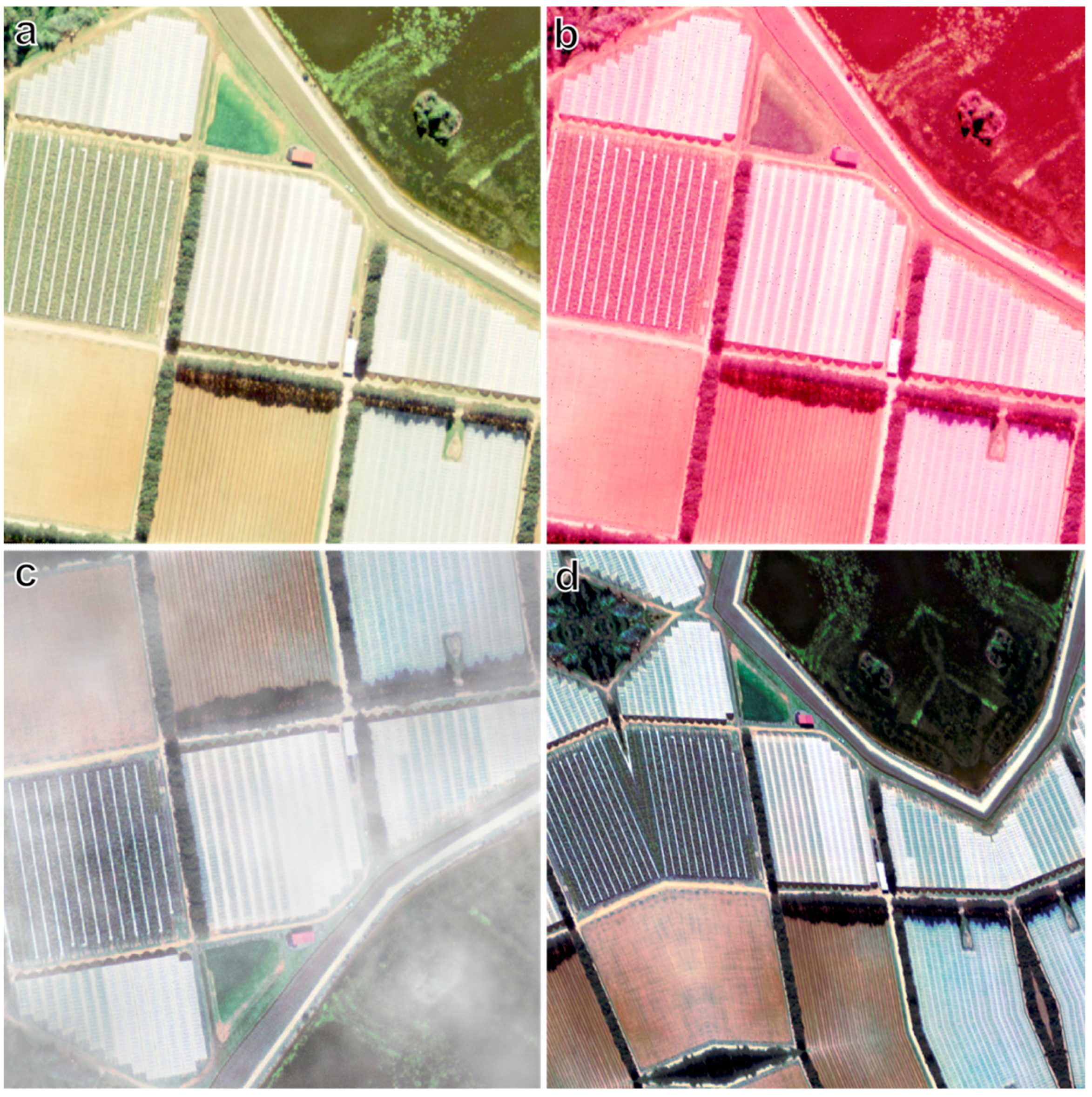
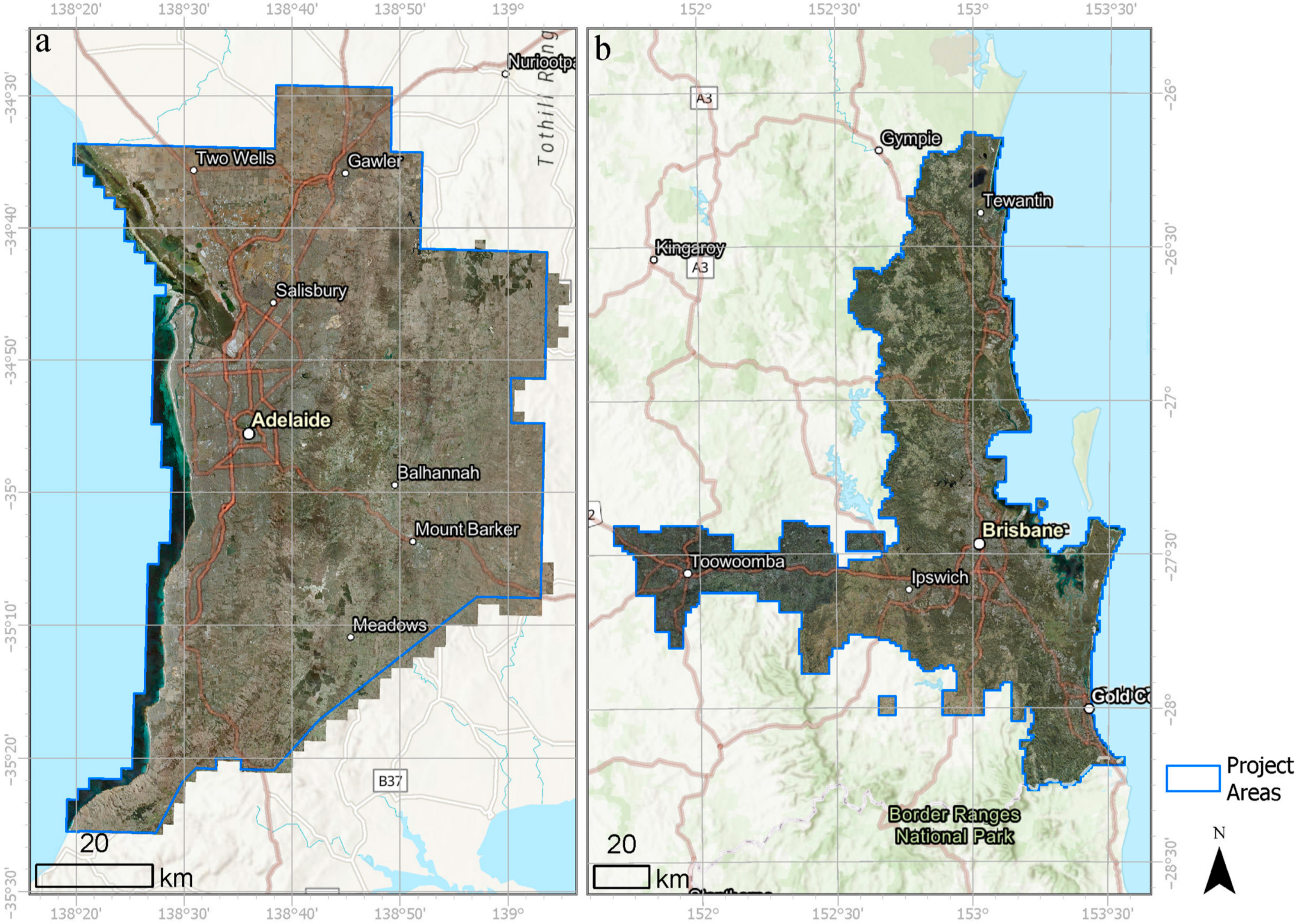

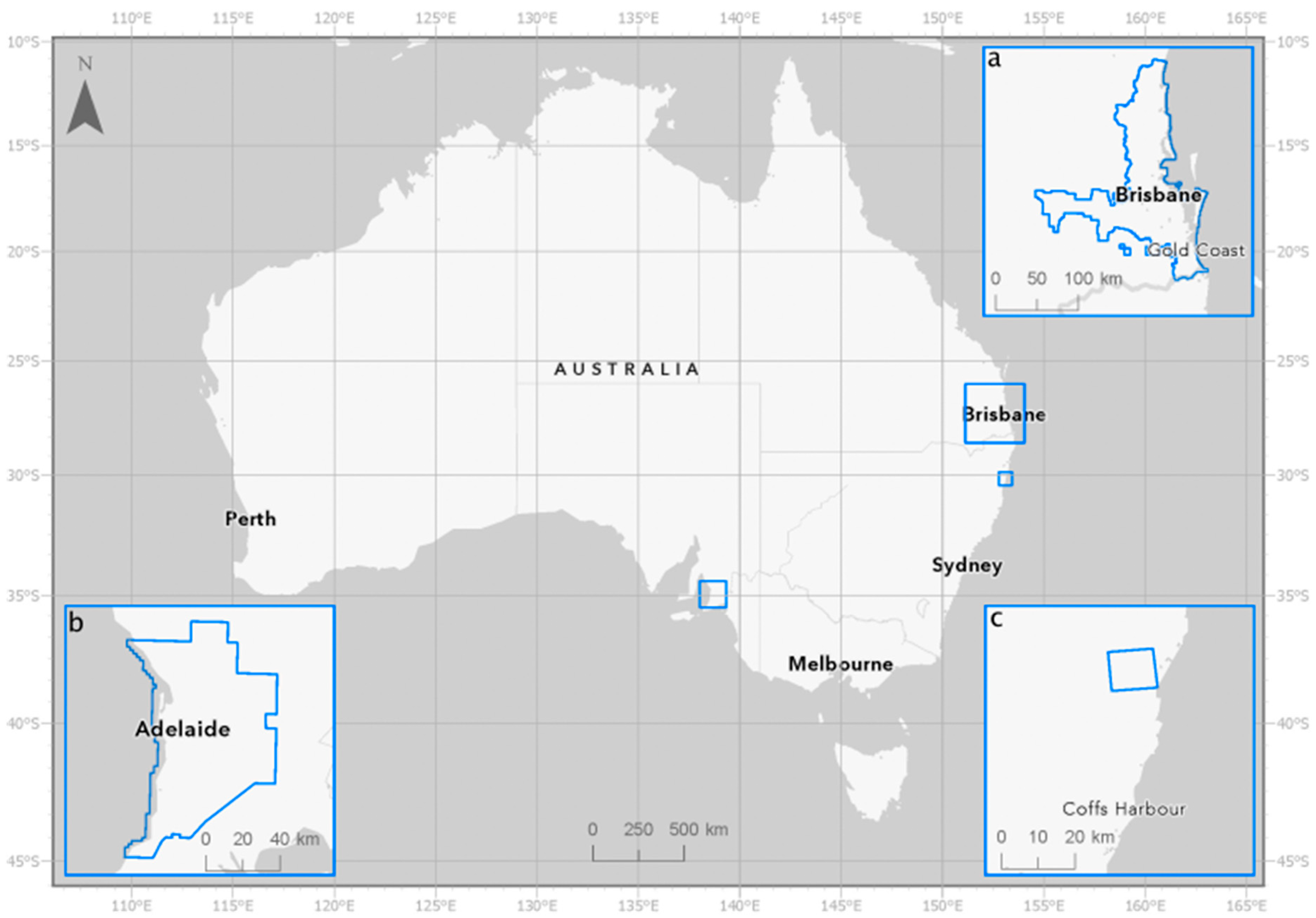

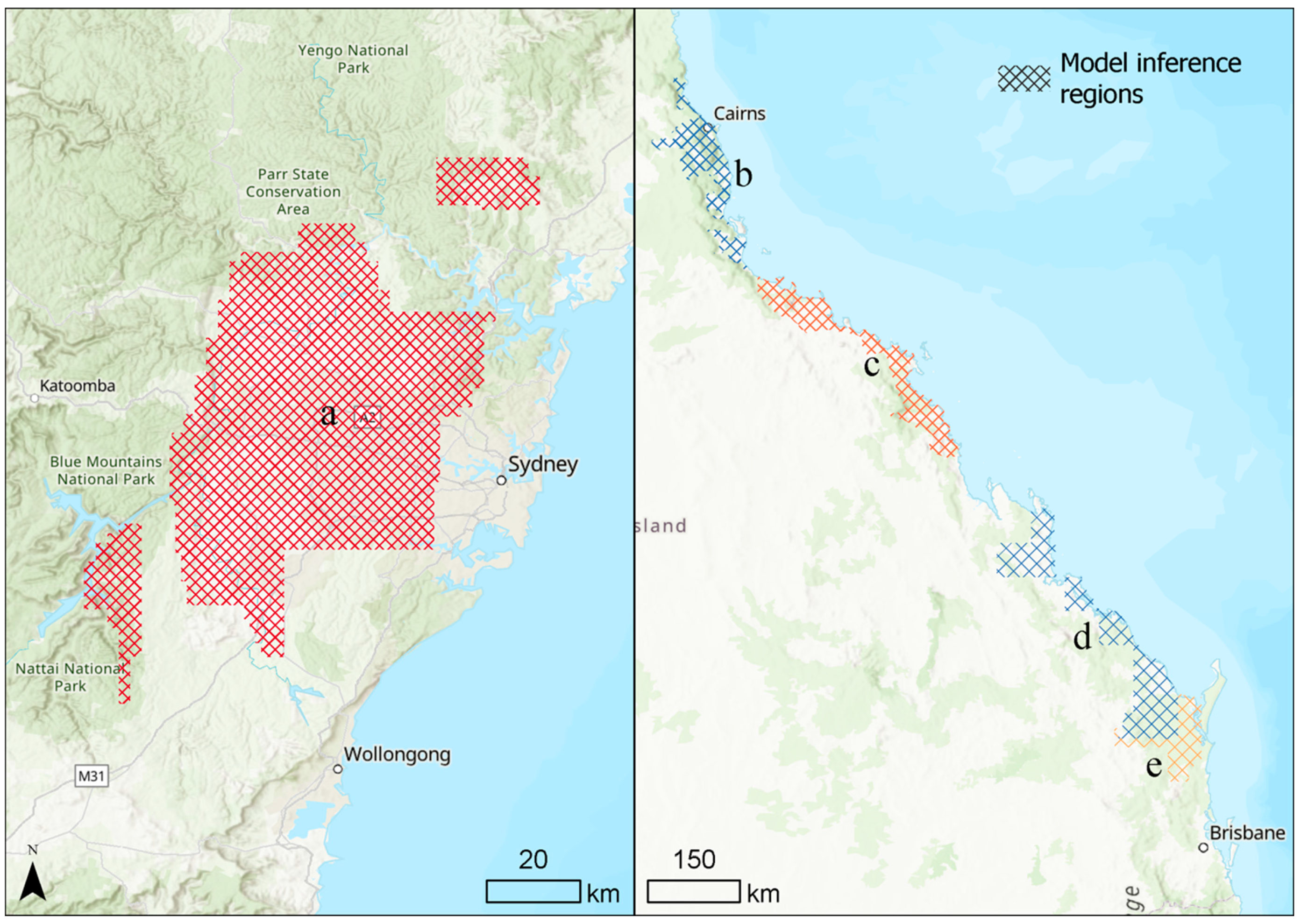

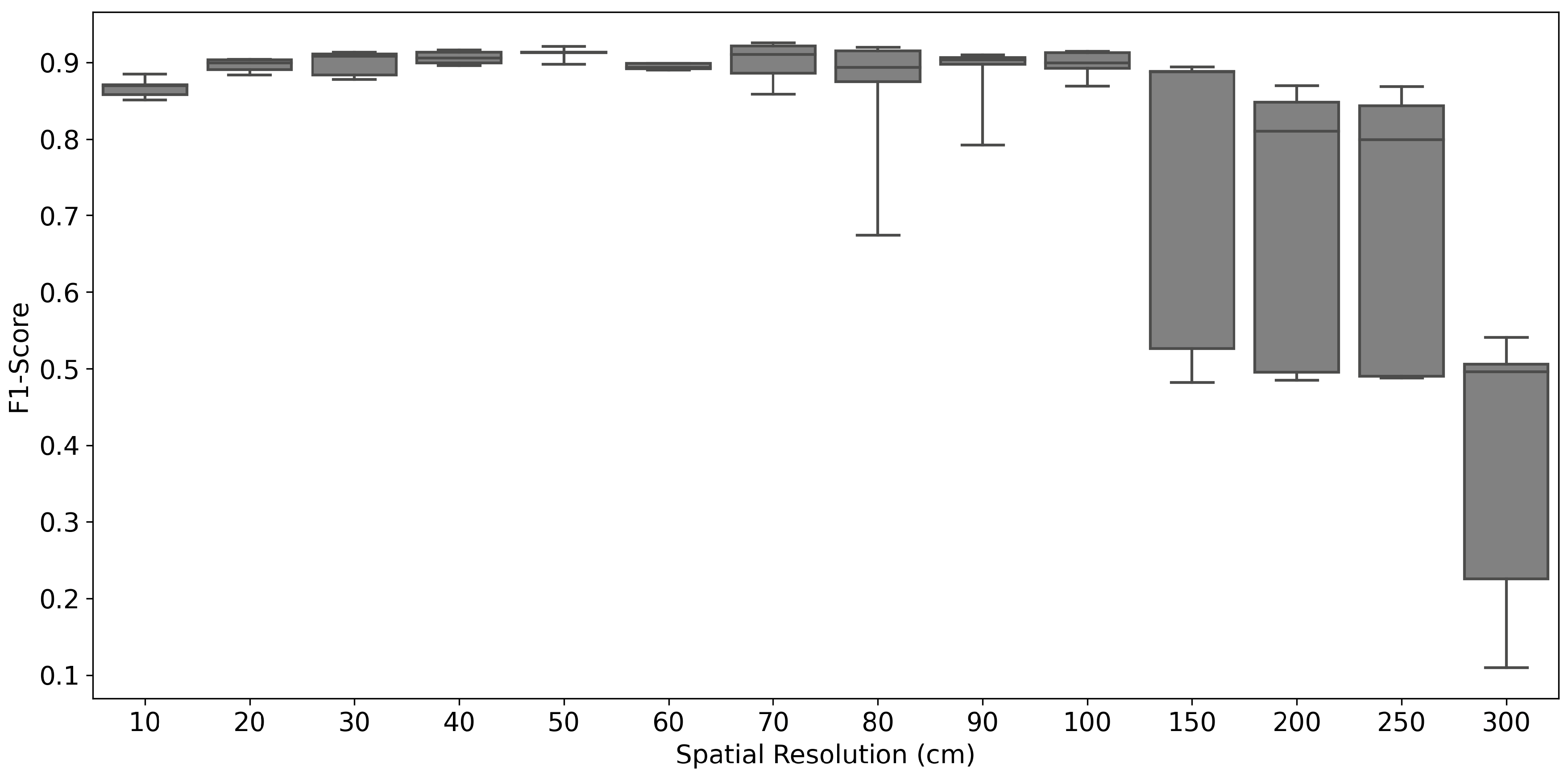
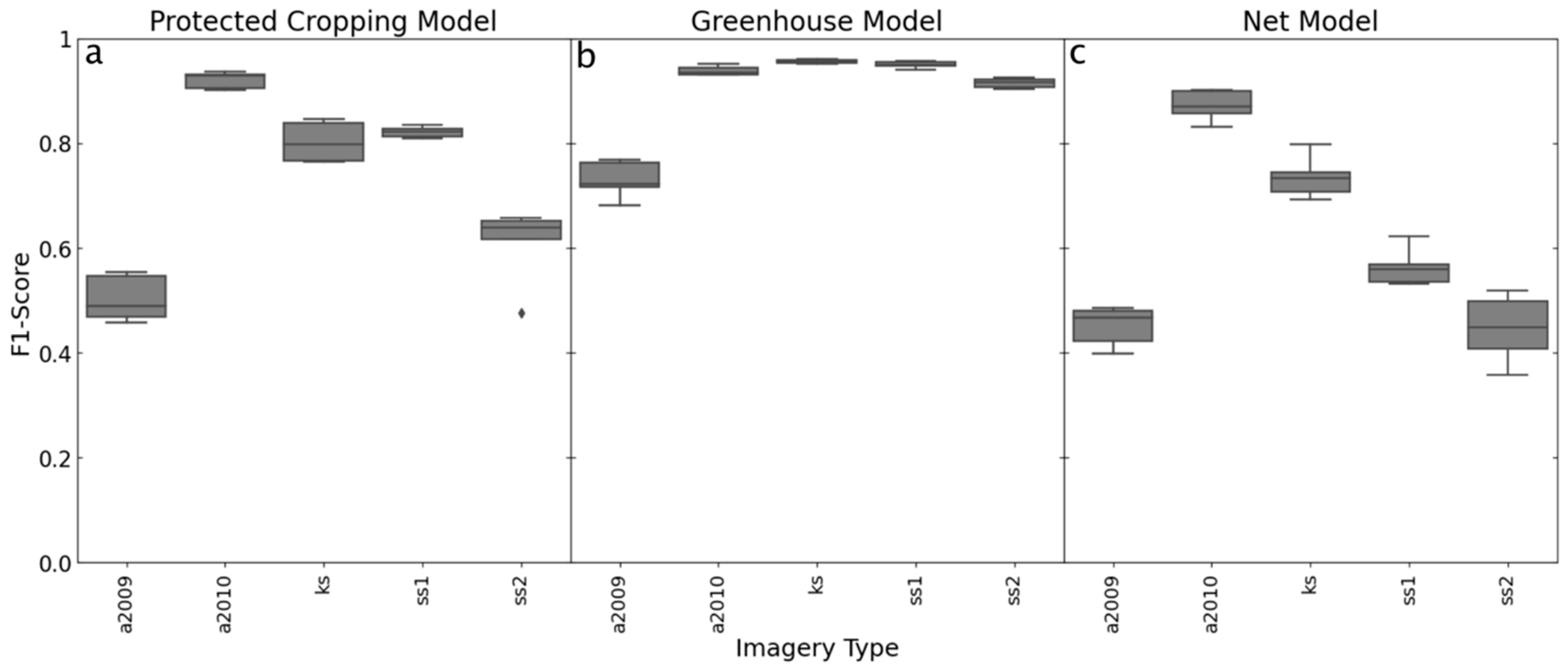


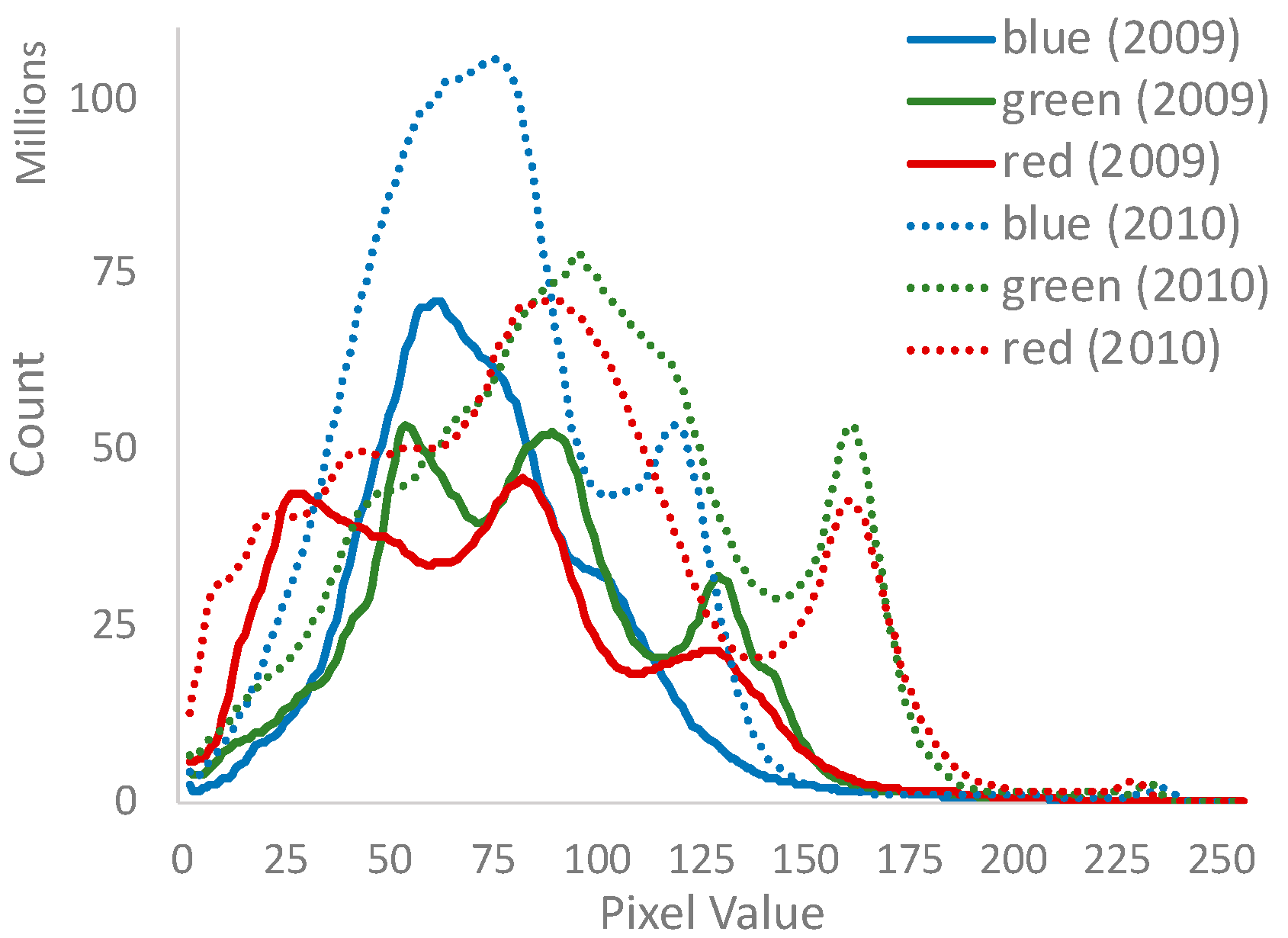
| State/Territory | Glasshouse (ha) | Polyhouse (ha) | Polytunnel (ha) | Net (ha) | Shadehouse (ha) | Total (ha) |
|---|---|---|---|---|---|---|
| ACT | 0 | 0 | 0 | 1 | 3 | 4 |
| New South Wales | 57 | 384 | 649 | 3005 | 120 | 4216 |
| Northern Territory | 0 | 0 | 1 | 73 | 12 | 86 |
| Queensland | 5 | 292 | 399 | 1872 | 130 | 2698 |
| South Australia | 87 | 1103 | 22 | 816 | 20 | 2048 |
| Tasmania | 9 | 7 | 505 | 803 | 0 | 1323 |
| Victoria | 125 | 166 | 354 | 1925 | 29 | 2598 |
| Western Australia | 9 | 49 | 249 | 532 | 118 | 958 |
| Total | 293 | 2001 | 2180 | 9028 | 431 | 13,932 |
Disclaimer/Publisher’s Note: The statements, opinions and data contained in all publications are solely those of the individual author(s) and contributor(s) and not of MDPI and/or the editor(s). MDPI and/or the editor(s) disclaim responsibility for any injury to people or property resulting from any ideas, methods, instructions or products referred to in the content. |
© 2023 by the authors. Licensee MDPI, Basel, Switzerland. This article is an open access article distributed under the terms and conditions of the Creative Commons Attribution (CC BY) license (https://creativecommons.org/licenses/by/4.0/).
Share and Cite
Clark, A.; Shephard, C.; Robson, A.; McKechnie, J.; Morrison, R.B.; Rankin, A. A Multifaceted Approach to Developing an Australian National Map of Protected Cropping Structures. Land 2023, 12, 2168. https://doi.org/10.3390/land12122168
Clark A, Shephard C, Robson A, McKechnie J, Morrison RB, Rankin A. A Multifaceted Approach to Developing an Australian National Map of Protected Cropping Structures. Land. 2023; 12(12):2168. https://doi.org/10.3390/land12122168
Chicago/Turabian StyleClark, Andrew, Craig Shephard, Andrew Robson, Joel McKechnie, R. Blake Morrison, and Abbie Rankin. 2023. "A Multifaceted Approach to Developing an Australian National Map of Protected Cropping Structures" Land 12, no. 12: 2168. https://doi.org/10.3390/land12122168







